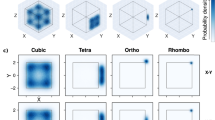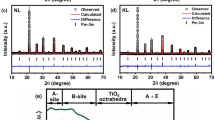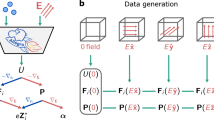Abstract
I HAVE earlier discussed the high permittivity of barium titanate and its temperature behaviour1. Additional experimental results such as the dependence of permittivity on the electrical field strength, the dielectric hysteresis loops and the maximum in the thermal capacity at the permittivity peak temperature show that this substance is a new type of ferro-electric. It should be noted that, as distinct from other known ferro-electrics, barium titanate does not contain hydrogen. For practical purposes, it is important to note that it may be used as an electrical insulator in which the ferro-electric properties are manifest over a wide temperature range. A detailed article will be published in the Journal of Physics.
This is a preview of subscription content, access via your institution
Access options
Subscribe to this journal
Receive 51 print issues and online access
$199.00 per year
only $3.90 per issue
Buy this article
- Purchase on SpringerLink
- Instant access to full article PDF
Prices may be subject to local taxes which are calculated during checkout
Similar content being viewed by others
References
Wul, B., Nature, 156, 480 (1945).
Jackson, W., and Reddish, W., Nature, 156, 717 (1945).
Eremeyew, M., and Kurtschatow, B., Phys. Z. Sowjetunion, 3, 304 (1933).
Author information
Authors and Affiliations
Rights and permissions
About this article
Cite this article
WUL, B. Barium Titanate: a New Ferro-Electric. Nature 157, 808 (1946). https://doi.org/10.1038/157808a0
Issue date:
DOI: https://doi.org/10.1038/157808a0
This article is cited by
-
Untersuchungen an Bariumtitanat-Einkristallen
Experientia (1947)



